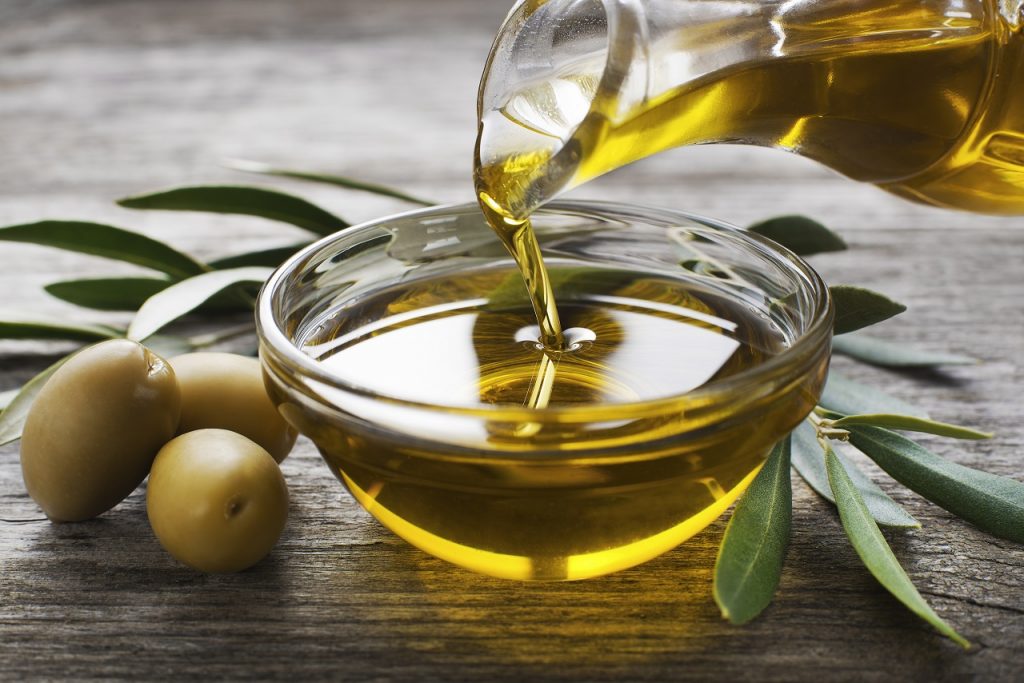 With newer superfoods making their mark on our plates, olive oil has gained a lot of popularity in India. Indians use oil in everything while searching for the healthiest alternative at the same time. As a result, the markets are flooded with brands and variants of olive oil. The most important question to ask here is: Does it fit in the Indian kitchen? Let’s find out by understanding what you are buying from the market because not all of them are created equally!
With newer superfoods making their mark on our plates, olive oil has gained a lot of popularity in India. Indians use oil in everything while searching for the healthiest alternative at the same time. As a result, the markets are flooded with brands and variants of olive oil. The most important question to ask here is: Does it fit in the Indian kitchen? Let’s find out by understanding what you are buying from the market because not all of them are created equally!
Different Types of Olive Oil
There is no doubt that olive oil is healthy fat obtained by crushing olives using different methods. The catch is that the quality of olive oil sitting in your pantry is determined by the process of extracting the oil from the olives, the varieties, and how/whether they should be used in different cooking methods. Here’s a breakdown of the most common types:
- Extra Virgin Olive Oil: This is the highest quality extracted from freshly squeezed juice from olives using stone, wood or steel rollers. It has a very strong flavor, aroma and contains no more than 0.8% acidity. No chemical solvent or industrial refining process is used while producing this variant. In fact, temperatures are kept below 75 degree Fahrenheit during the whole process. Even after packaging, it is mandatory to keep it away from heat and sunlight. So it is clear that to get benefits from this high grade oil, you should not heat it. You can drizzle it over your pasta, salad, soups or use it for making dips.
- Virgin Olive Oil: This is also an unrefined variety but slightly lower in quality. Containing 1.5% acidity, it is considerably a subpar option to extra virgin variant. Still, it has a good aroma and is suitable for low temperature sautéing and baking as you are trying to substitute butter or any other saturated fat.
- Refined Olive Oil: If you see a bottle with “pure olive oil”, “Lite olive oil” or simply “olive oil” in a supermarket, they are usually Refined olive oils (or are mixed with some other refined oils). They are prepared using olives that are in bad condition or rancid olive oil after treating them with heat and chemicals to remove any unpleasant flavors as well as neutralize free fatty acid content. Being heavily processed, they do not contain any benefits of the extra virgin variant. You can use these for any kind of regular cooking. But don’t expect too much from it in terms of health.
- Olive Pomace Oil: Pomace is the word used for the leftover olive pulp after the first extraction which consists of skin, pulp, seeds and stems. The amount of oil present in pomace is so minimal that it cannot be extracted through pressing but only using chemical solvents like hexane and high heat. Clearly it has no benefits but calories. This variant is for people who are attracted by the benefits of olive oil, but are looking for something in their budget.
Are These Variants Suitable For The Indian Kitchen?
After going over these variants, if you’re wondering which oil is suitable for an Indian pantry, then go back to your grandma’s kitchen. In India itself, we have so many healthy oil options that you don’t need to run after everything that the western world is popularizing . But just like olive oil, you need to choose the least processed or filtered variety of different oils. Some good options for Indian style high heat cooking are filtered or cold pressed varieties of sesame, groundnut, coconut or mustard oil. Also, let’s not forget desi ghee which accompanies “Maa ka pyar” in every traditional meal. Last but not the least, Consumption of any oil should be in moderation while following a balanced diet and regular exercise for good health.
Olive oil can be a part of your Indian kitchen, but it’s important to choose the right type based on your cooking needs. Use extra virgin olive oil for raw applications like salads and dips, virgin olive oil for low-heat cooking, and refined olive oil for regular cooking. However, for high-heat cooking methods like frying and tempering, traditional Indian oils like mustard, coconut, and sesame oil are better suited. Remember, moderation is key, and a balanced diet paired with regular exercise is the foundation of good health.
Have you tried using olive oil in your Indian recipes? Share your experiences in the comments below! For more tips on healthy cooking and nutrition, explore our Healthy Reads or consult a GOQii Coach for Personalised health advice. Subscribe now to start your wellness journey!
#BeTheForce




It is also good to note that since Indian kitchen is a kitchen where there are lots of high-heat cooking recipes exist, olive pomace oil which is the most tolerant olive oil type to heat is worth noting.
As it is explained in the body of the post that olive pomace oil is extracted by solvents heating. These processes give olive pomace oil a very high tolerance to high temperatures. This makes olive pomace oil a good alternative for Indian high-heat cooking needs.